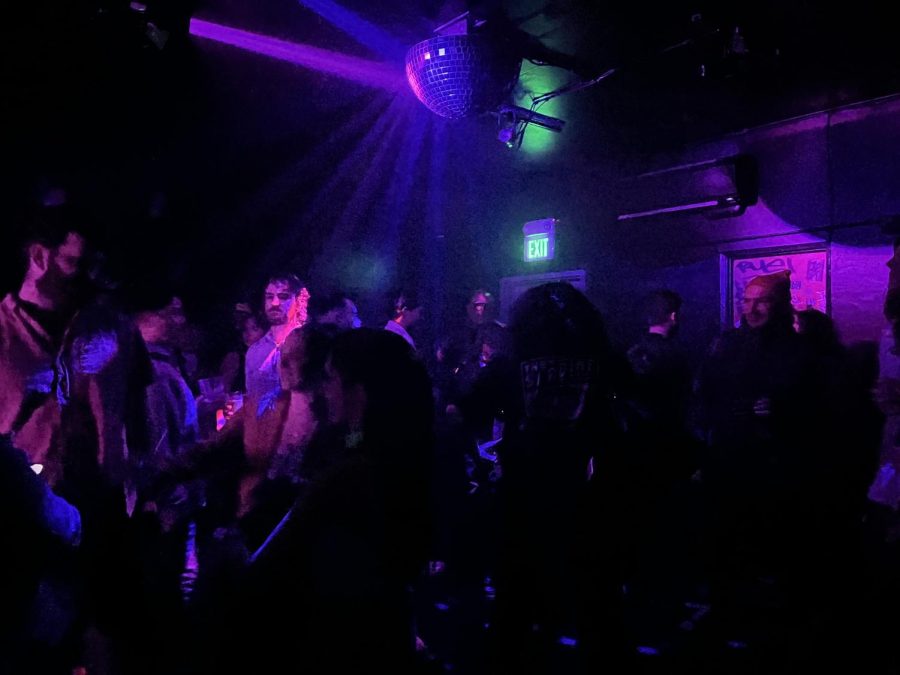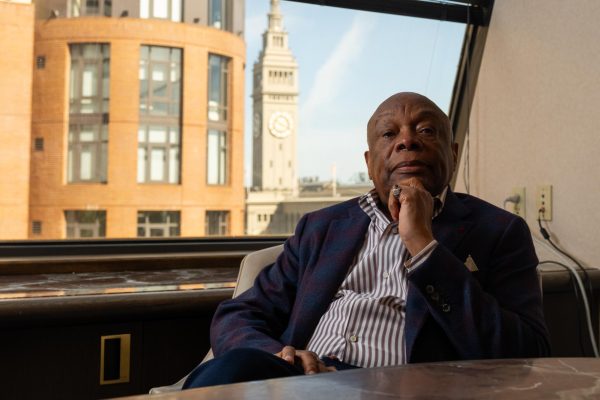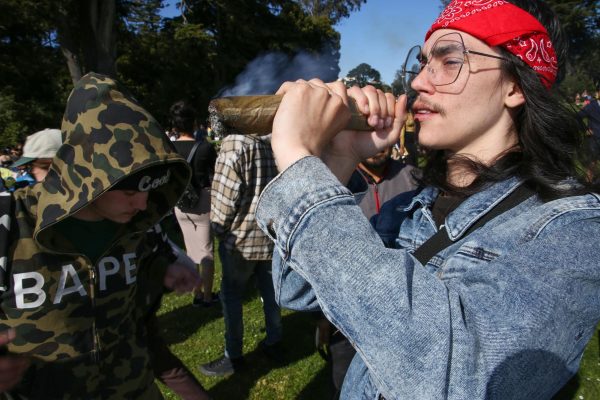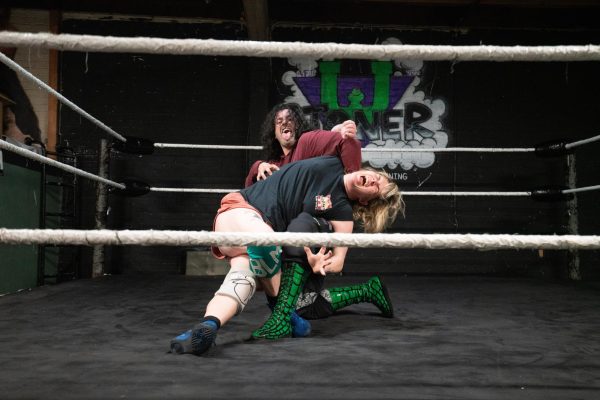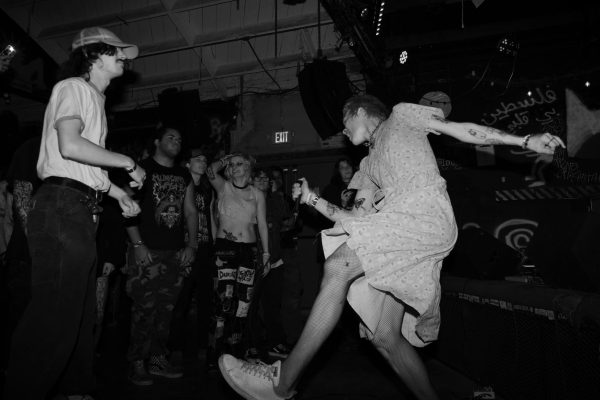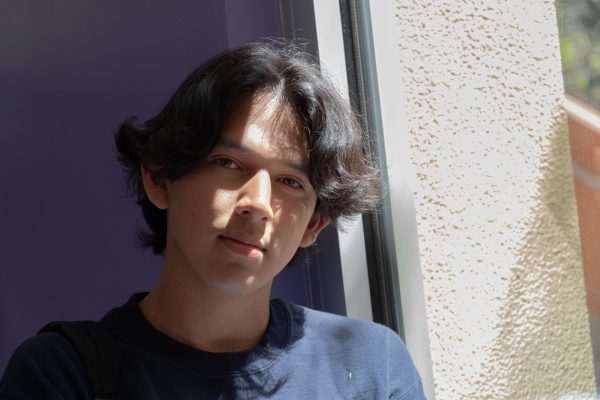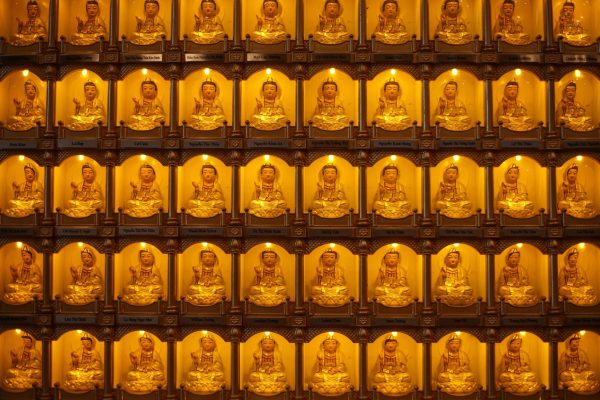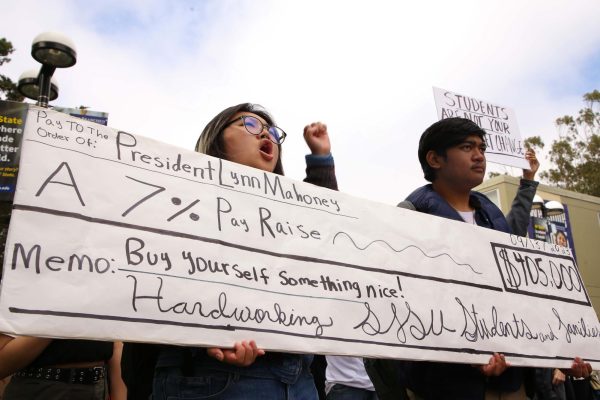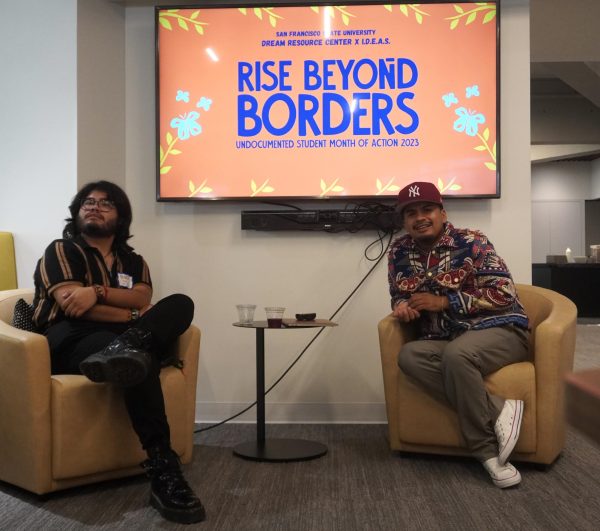Underground Vibrations
Anessa Bailon
Patrons enjoy the vibrating bass of techno music at Vitamin1k’s Techno Night at Underground SF on October 21, 2022. This was the collective’s first techno night and it was met with an astounding crowd. (Anessa Bailon / Xpress Magazine)
This podcast accompanies the story “Underground Vibrations” by Ximena Loeza.
Podcast Transcript
Ximena Loeza: The nightlife in San Francisco has always been a big draw to the city, and post-pandemic, the interest in clubs is coming back in full swing. Navigating through crowds of people young and old, lining up out the door to return to the dancefloors, Ximena (he-men-ah) Loeza and Anessa (ah-knee-suh) Bailon report from San Francisco on the state of electronic music. And you’re listening to the Bleed.
Ximena: Because we both love this diverse genre, we wanted to take an opportunity to look into the history, status and the future of electronic music in the Bay Area, so we took to the streets to find a party.
[techno music playing at UnderGround SF]
Voice: Welcome in welcome in, thank you
Anessa Bailon: Even as pulsing bass lines fill the venue on 424 Haight Street, the dance floor is a place of conversation and reconnection. Underground SF had its reopening in July, but on this Friday in October, music lovers filled the space for drinking and dancing. As I stepped outside of the venue for a smoke break, I asked the doorman of the venue, Ben, who grew up listening to house music in the 90s while living in Seattle, about the differences between parties back then versus now.
Ben: Oh kind of similar to what they are now, with the exception of—I don’t know—the venues are kind of harder to get, but the people are still just as wild and still just as friendly.
Anessa: The electronic scene in San Francisco has always faced threats of party breakups and police intervention, especially in the early 90s when beaches, warehouses and woods served as the venues, but there are several reasons why these secret, or “renegade” parties are happening less frequently.
Ben: Just cuz they’ve figured it out. Cops, the authorities.
Anessa: In the 90s, renegade parties were San Francisco’s best kept secret, and they drew people from as far as the UK to enjoy the popular Acid House sound. But the hazards attached to this style of partying became most evident after a notorious incident occurred in 2016.
[archival audio of news from Ghost Ship]
Anessa: Ghost Ship served as both an art space and living area, and it often hosted these renegade techno parties. The crackdowns that happened as a result have limited the ability for organizers to throw secret parties, but this has not been the only problem for San Francisco’s electronic music scene.
The pandemic caused many music venues to shutter for longer than other businesses.
Ximena: And the restrictions placed on both the owners and patrons of these event spaces caused a lot of lost revenue.
Anessa: Despite all these obstacles surrounding the electronic scene, people still want to come out to have a good time. So if renegade parties are few and far between, and venues are competing for variety in booking their live acts, how does one find a good electronic party?
Wyatt Slate: Yeah Instagram is for sure been really helpful. That’s kind of where it’s all based around just because it’s like where most of the communities and stuff is based.
Ximena: That was Wyatt Slate, one of the founders of Vitamin 1k.
Anessa: Vitamin 1k is a collective of DJs and producers that now use social media to draw people to their events.
Ximena: I stumbled upon one of their TikTok videos promoting a party that has now garnered over 90 thousand views.
Anessa: The renaissance of electronic music in San Francisco brings new opportunities for these DJs and producers looking for a community.
Wyatt: “There’s been a lot of new interests in dance music here. So there’s a lot of new sounds coming in and like new crews and new parties, there’s been new venues since COVID.
Ximena: Yuri, also known as Aircrax, has been DJing in the Bay Area since 2018. She started mixing in college while going to school in Pittsburg but found that San Francisco’s electronic music scene is like no other.
Yuri: I’ve never felt more included in a community.
Ximena: This scene has slowly turned into a close knit community of, not just fellow DJs, but friends, where everyone knows each other and supports each other’s endeavors. Yuri and I even spoke about Vitamin1k, and their influence on the scene.
Yuri: I think these are great examples of like, you know, younger, younger generation of like musicians who are starting to rewrite the scene in the city. And I think that’s amazing.
Ximena: After my phone call with Yuri, I just had to drag Anessa to see Aircrax live. So, we stopped by Fault Radio to check out their first set of the day, who was in fact Yuri.
[ambient noise of outside and set]
Yuri: I’m just about to start my set with Fault Radio actually going to be DJing vinyl for the first time ever!
Ximena: No way, first time! Okay, this is a really good experience. Oh, we came on a perfect day.
Yuri: Hella good experience for me for sure. So let’s hope I don’t fuck up.
[music playing]
Ximena: As you walk into Fault Radio, you see T-shirts hung on the walls, paintings on the walls and from local artists. You’re hit with the smell of incense as it wafts through the room. The manager in the corner rolls a joint as Yuri starts her set.
[Yuri’s set music playing]
Ximena: Fault Radio is a nonprofit grassroots organization that was started in the Bay Area in 2018. But their first ever physical location, where Yuri is performing, only opened in July 2022.
I was able to catch Mohit Kahli, a studio manager of Fault Radio, to learn more about the inviting and chill space he manages.
Mohit Kahli: A nonprofit kind of grassroots type pop up nomadic radio station so we’ve kind of basically go to they would go to different spots, coffee shops, record stores, Auto Body garages, or wherever had good internet and space that would allow them they would curate lineups and host DJs and things like that. They’ve done in the four years now it’s been like, you know, 200 plus locations like 1000 plus different DJs from around the world but focused on the Bay Area like SF Oakland.
Ximena: Mohit, also known as Mo, told me about how the Fault Radio team wanted to create a space for electronic music lovers to come enjoy music, without external pressures.
Mo: I think we all had this vision to create this, like, community hub, like hangout spot, you know, where we could also like, post DJs, but also just for people to come in, like, kick it and like, just chill, listen to music and not not worry about like spending money or like, you know, partying or whatever, you know, and it’s kind of turning out to kind of exactly what we had in mind, you know.
Ximena: On their website, Fault Radio’s mission reads: “Fault Radio functions as both a stationary and mobile community hub; we bridge the electronic music community on- and offline via live-streams and collaborative pop-up events to document and experience the brilliance of our local music scene.”
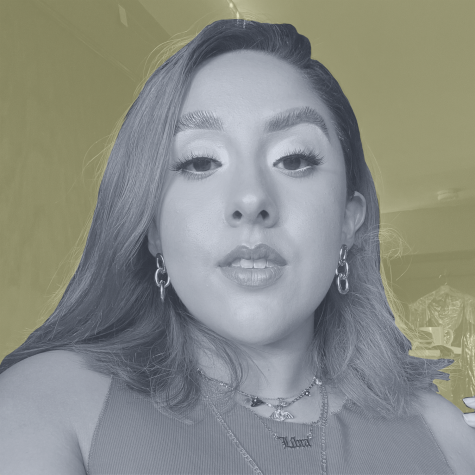
Ximena Loeza (she/they) is a 22-year-old Bay Area native. She enjoys writing about beauty, fashion, social justice, queer culture, and all things pop culture.


